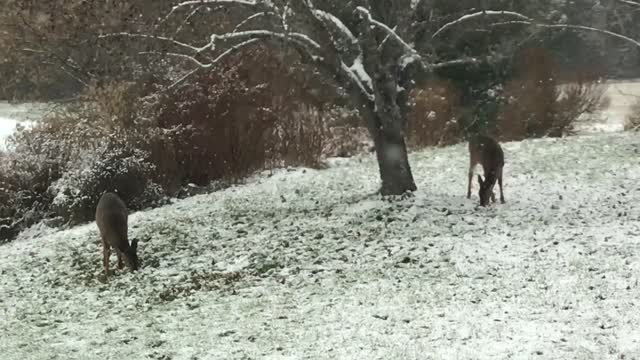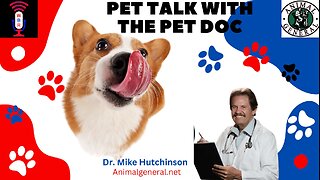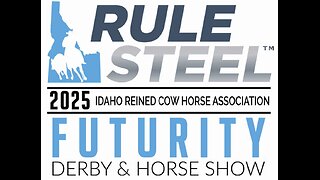Premium Only Content

Baby deer & mom frolic in first snow of the season
Such a beautiful sight to wake up to. This mom and 2 small fawns stopped out on my back property to feed on the apples and berries.
Here in New Hampshire, the white-tailed deer population is approximately 100,000 individuals. The areas of greatest densities are in the southern counties (Rockingham, Hillsborough, and Cheshire) and along the Connecticut River Valley (Grafton County). In 2014, the NH Fish and Game Department began the process of revising its 10-year management plan for white-tailed deer, moose, turkey, black bear, snowshoe hare, and ruffed grouse.
This document, called the NH Game Management Plan, spans the period of 2016 to 2025. Population level goals for deer were adjusted to more closely reflect current biological conditions and limitation, as well as public interests and concerns. These goals aim to stabilize the deer population in many areas of the state while increasing or reducing it in others.
Habits and Habitats
White-tailed deer can live in a variety of habitats, including farmlands, brushy areas, woods, mountains, and suburbs and gardens. They feed on green plants, including aquatic species in the summer, acorns, beechnuts, and corn in the fall, and woody vegetation, including buds and twigs of birch, maple and conifers in the winter. White-tailed deer will typically consume 5 to 9 pounds of food each day and find water from snow, dew and waterbodies.
Individual deer group into two types of social combinations. These include the family group, with a doe and her young, and the buck group. The family group will stay together for approximately a year. Buck groups are structured with a dominance hierarchy of 3 to 5 individuals. Bucks will challenge each other with stares, lowered ears, kicking, sparring (physically pushing each other back), and less commonly, thrashing of forefeet.
During the winter, these two deer groups may come together, forming communities of up to 150 individuals in locations called “yards.” This unification keeps trails open and accessible for feeding and also provides protection from predators. However, there have been problems with humans providing supplementary feed sites for deer in the winter. These sites can cause unnaturally high densities of congregated deer that attract predators, increase the risk of disease transmission, increase aggression within the community, and lead to over-browsing of local vegetation and more deer-vehicle collisions. They cause deer to be more dependent on humans and artificial food sources that provide few benefits.
-
 1:18:23
1:18:23
Simply Bitcoin
2 days ago $12.97 earnedThe Bitcoin Crucible w/ Alex Stanczyk and Lawrence Lepard
22K4 -
 1:25:03
1:25:03
Jeff Ahern
6 hours ago $18.23 earnedThe Saturday Show with Jeff Ahern
74.5K10 -
 1:31:56
1:31:56
Michael Franzese
21 hours agoWill NBA do anything about their Gambling Problems?
134K26 -
 57:26
57:26
X22 Report
10 hours agoMr & Mrs X - The Food Industry Is Trying To Pull A Fast One On RFK Jr (MAHA), This Will Fail - EP 14
108K72 -
 2:01:08
2:01:08
LFA TV
1 day agoTHE RUMBLE RUNDOWN LIVE @9AM EST
164K15 -
 1:28:14
1:28:14
On Call with Dr. Mary Talley Bowden
9 hours agoI came for my wife.
39K34 -
 1:06:36
1:06:36
Wendy Bell Radio
14 hours agoPet Talk With The Pet Doc
79.9K36 -
 30:58
30:58
SouthernbelleReacts
3 days ago $9.51 earnedWe Didn’t Expect That Ending… ‘Welcome to Derry’ S1 E1 Reaction
54K12 -
 13:51
13:51
True Crime | Unsolved Cases | Mysterious Stories
5 days ago $21.26 earned7 Real Life Heroes Caught on Camera (Remastered Audio)
67.3K17 -
 LIVE
LIVE
Total Horse Channel
20 hours ago2025 IRCHA Derby & Horse Show - November 1st
49 watching